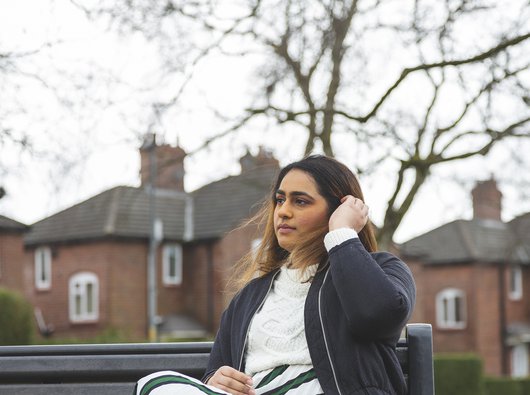Burkitt lymphoma
Burkitt lymphoma treatment and side effects
The main treatment is with a combination of chemotherapy and immunotherapy, (immuno-chemotherapy).
You will usually have your treatment in a specialist hospital over two to four long visits, with each visit lasting 14 to 21 days. Talk to your healthcare team about preparing for your visits.
Information for young adults
For young adults with leukaemia, lymphoma or any blood cancer type. Your guide to treatment, side effects, coping with emotions, friends and work or study.

Chemotherapy
Chemotherapy uses drugs to kill cancer cells or stop them from growing. There are many different drugs used, and you may have a combination.
You will have chemotherapy through a vein (intravenously). You will probably have a flexible tube called a PICC line (peripherally inserted central catheter) in your arm or a Hickman® line in your chest fitted for this – this will stay in place throughout your treatment.
You might also have an injection into your spinal fluid to treat or prevent lymphoma in your brain and spinal cord. This is called intrathecal therapy.
Side effects of chemotherapy
Some people get side effects from chemotherapy. These can include:
- tiredness (fatigue)
- feeling sick (nausea)
- hair loss
- numbness in your hands or feet
- anaemia (low numbers of red blood cells)
- bleeding or bruising
- neutropenia (low levels of white blood cells), which can be serious.
If you do have any side effects, let your healthcare team know as they will be able to help.
Chemotherapy can also affect your ability to have children (fertility). Ask about your fertility options available before you start chemotherapy.
Immunotherapy
Immunotherapy encourages your immune system to target and fight cancer cells. The drug used is called rituximab. You can have it through a drip into your vein or by injection under the skin.
Side effects of rituximab
Rituximab can also cause side effects, including:
- fever
- chills
- shivering.
Tell your doctor or nurse straight away if you develop any side effects or feel unwell.
We have more information on managing the side effects of treatment.
If the cancer comes back
If the lymphoma comes back after treatment, you may be offered different treatments to the ones you had to start with. For example, a stem cell transplant.

Find out more about side effects
Tips and real stories about side effects like hair loss, peripheral neuropathy, brain fog, sleep problems, infection risk, nausea and sore mouth.
